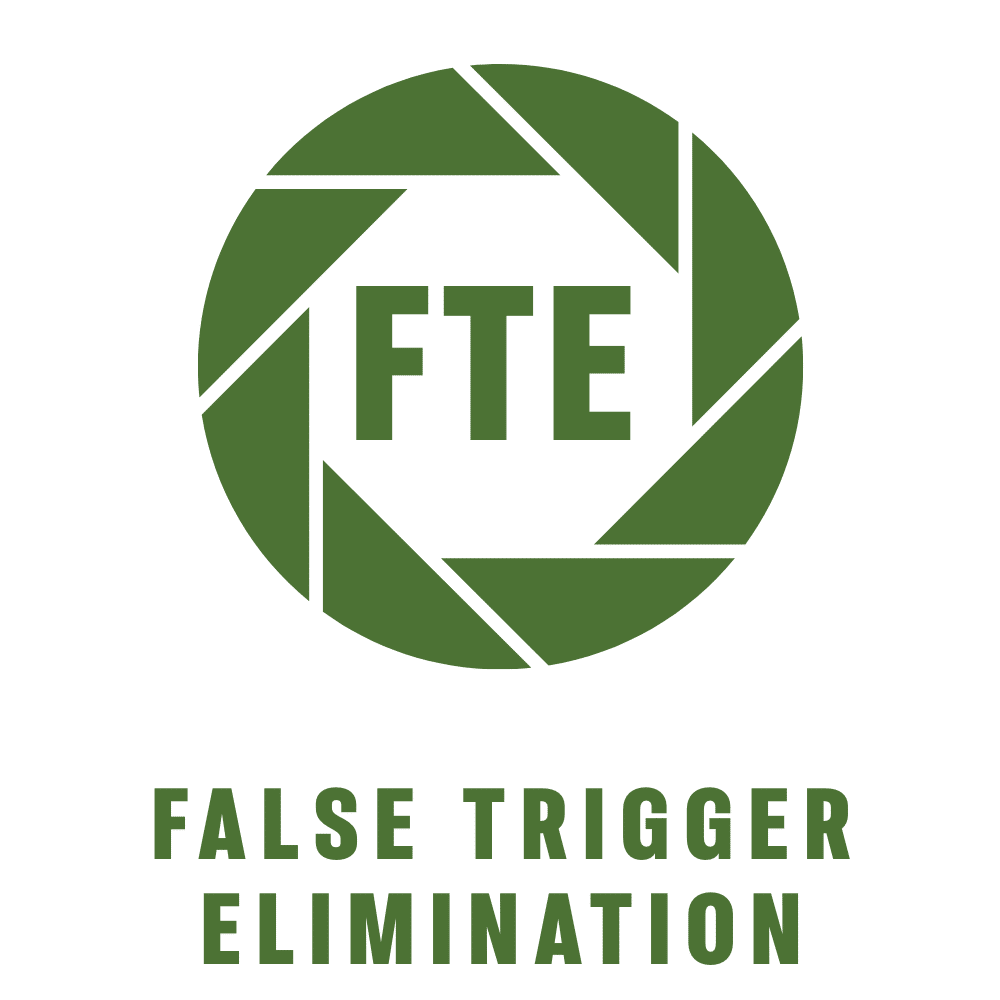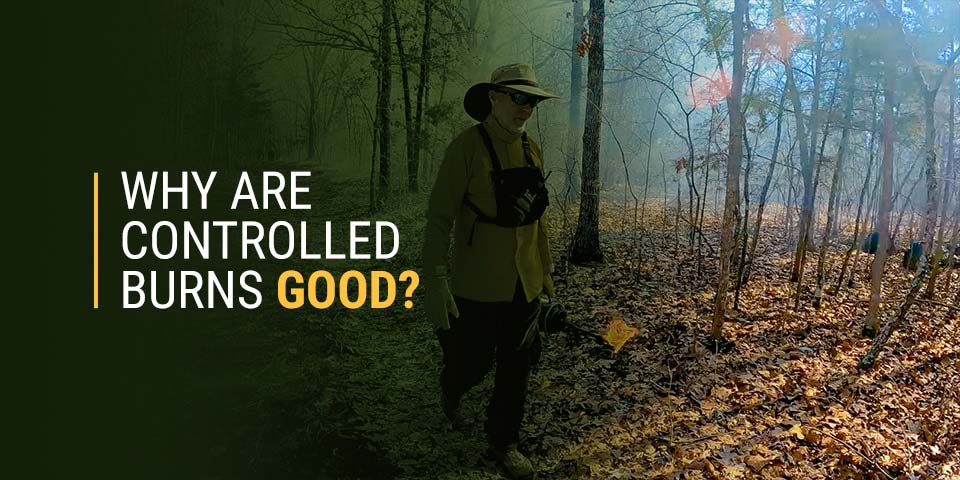Why Are Controlled Burns Good?
Controlled burns, also known as prescribed fire, are intentionally and strategically set in an area to accomplish specific goals. A prescribed fire is not the same thing as wildfire that can sweep through a forest killing large trees and destroying property. Prescribed fires burn through the underbrush, clearing way for native plant species to grow and flourish. These fires also reduce dead plant matter to a state that allows new growing plants to take up the nutrients more easily and quickly. These fires can range from a few acres to a few hundred acres and work to:
- Control invasive plant and insect species
- Release native seeds to stimulate growth
- Promote plant diversity
- Reduce the risk of wildfires
- Provide acres of quality habitat and forage for wildlife
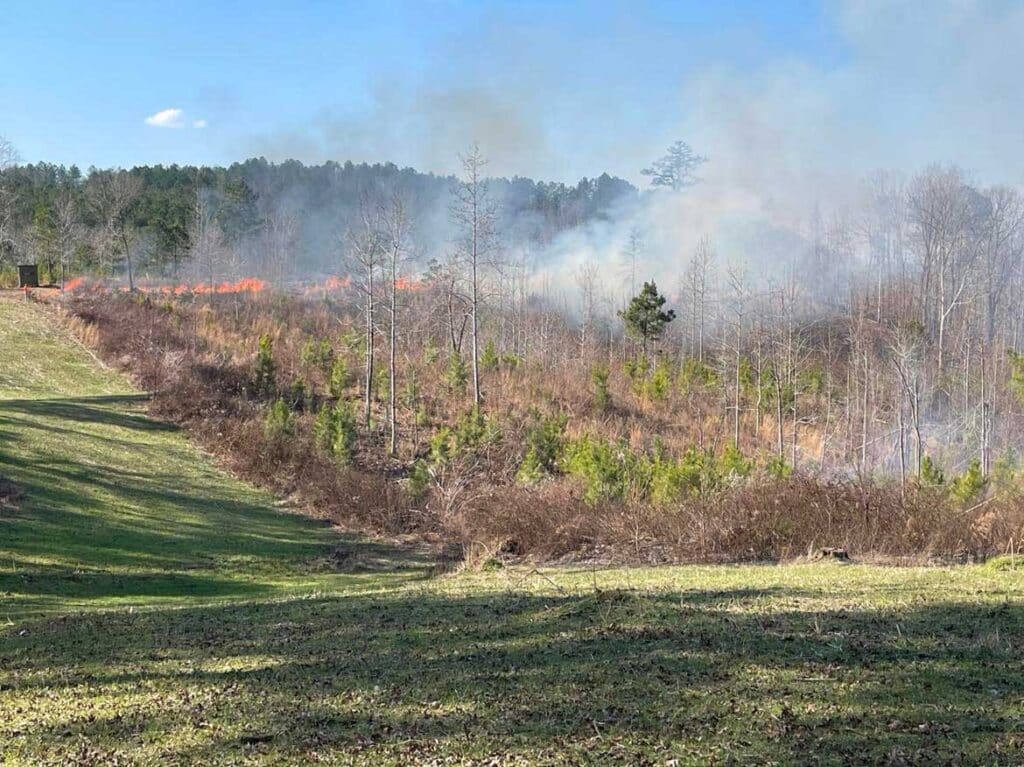
Are Controlled Burns Legal?
Controlled burns are legal and used by various federal and nongovernmental agencies, as well as private landowners. In the United States, there are over 10 million acres of land burned each year. Each state sets guidelines for when and how a controlled burn can be conducted.
Prescribed fires usually require a burn permit prior to conducting the burn. In many states you contact the forestry service to obtain a burn permit. In other states, there are more strict rules to follow.
For example, the Pennsylvania Legislature passed the Prescribed Burning Practices Act in 2009 which established standards under which a controlled burn can be used. These standards note two important requirements to follow:
- There must be an approved burn plan.
- Qualified experts must perform all controlled burns.
While these are Pennsylvania’s requirements, they are not the same in each state. Check with your states forestry service about regulations specific to your area and to find out how to obtain a burn permit.
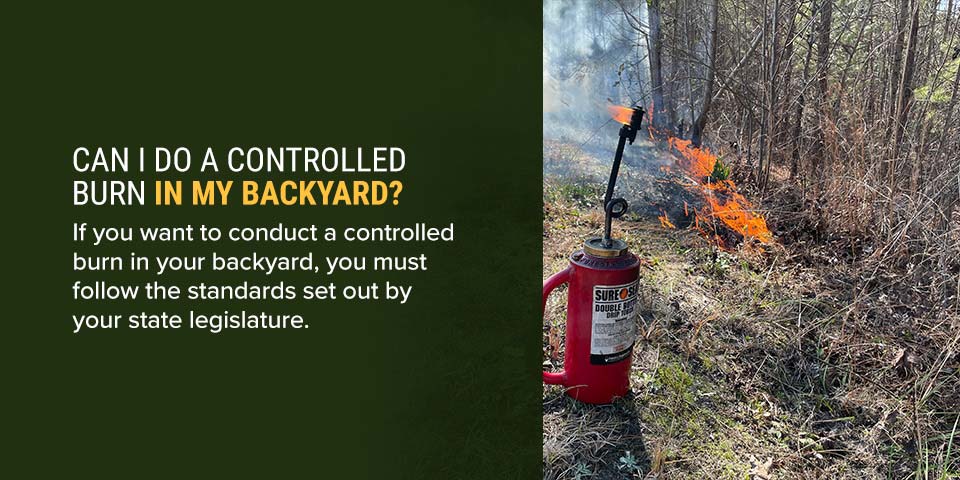
Can I Do a Controlled Burn in My Backyard Or On My Property?
If you want to conduct a controlled burn in your backyard or on your own property, you must follow the standards set out by your state legislature and local ordinances and obtain a burn permit. You must create and approve a burn plan, which outlines the burn area, ideal weather conditions, safety requirements and any required personnel equipment. Many states offer training and certification to learn how to conduct prescribed fires. There are also options to hire professionals to conduct the burn on your property.
In some states, you might need the approval of a “burn boss,” who is an extensively trained professional who will carry out your burn.
Techniques to Conduct a Controlled Burn
Typically, controlled burns are started by hand using equipment called drip torches. These torches are filled with a mixture of diesel and gas, and have safety shut-off valves inside that keep the flame from traveling back into the canister and causing harm to the user. They allow the burn crews to ignite a fire line over large areas by pouring out the flaming fuel on to dry grasses and leaves. These crews are usually qualified firefighters and use equipment like fire pumps, all-terrain vehicles and specialized fire tools to ensure a safe, controlled burn.
Some techniques these crews might use include:
- Backing Fire: Lit at most downwind section of a burn unit to ensure the fire remains within the pre-made firebreaks. A backing fire is typically the first fire to be set, because it slowly backs into the wind. This keeps the fire low and easier to control, allowing it to slowly burn up the grass and leaf litter. Once the backing fire moves through an area, there is no more fuel to consume, which extends the firebreak and reduces the chances of a fire jumping the line into another burn unit.
- Heading Fire: Set on the upwind side of a burn unit, a heading fire burns hot and intense. Once a backing fire has sufficiently burned a fuel-free zone 30 to 40 yards wide, a head fire can be started. Heading fires burn intense, because the wind is pushing the heat and flames through the grasses and leaves. This preheats the fuel and dries it quickly, allowing for quick ignition. Heading fires are desired when trying to kill unwanted tree saplings from a burn unit. A heading fire can also kill or damage large oak trees that might be beneficial to wildlife. So, be sure to clear fuel from around any trees which you wish to keep.
- Strip Fire: A series of head fires ignited upwind of a backing fire. Strip fires are typically ignited 10 to 15 yards in front of the backing fire to help speed the burn up, but without setting the entire burn unit on fire with a head fire. This can be a great technique in smaller burn units or on windy days.
- Flanking Fire: Set parallel to the wind.
- Ring Fire: Set in a circular ring around the area and moves its way towards the center.
- Fire Breaks: Fire breaks are essential for prescribed fire as they keep the fire contained so that it doesn’t spread or get out of control. A fire break can be a dirt road, tilled up ground exposing bare earth, a green food plot or field, a creek, or a line where leaves have been removed with a leaf blower to expose bare soil. Fire breaks must be completed before a prescribed fire is ever ignited in a burn unit.
You should never conduct a controlled burn without the proper training, education, equipment and personnel. Fire is one of the best tools a land manager can use, but it must be used with extreme caution and knowledge to accomplish the management objectives prescribed.
Learn More From Moultrie Mobile
Moultrie Mobile provides high-quality cellular trail cameras that can help you monitor your property. These cameras send detailed photographs straight to your phone to keep you up to date.
Find the best trail camera for your needs online today!
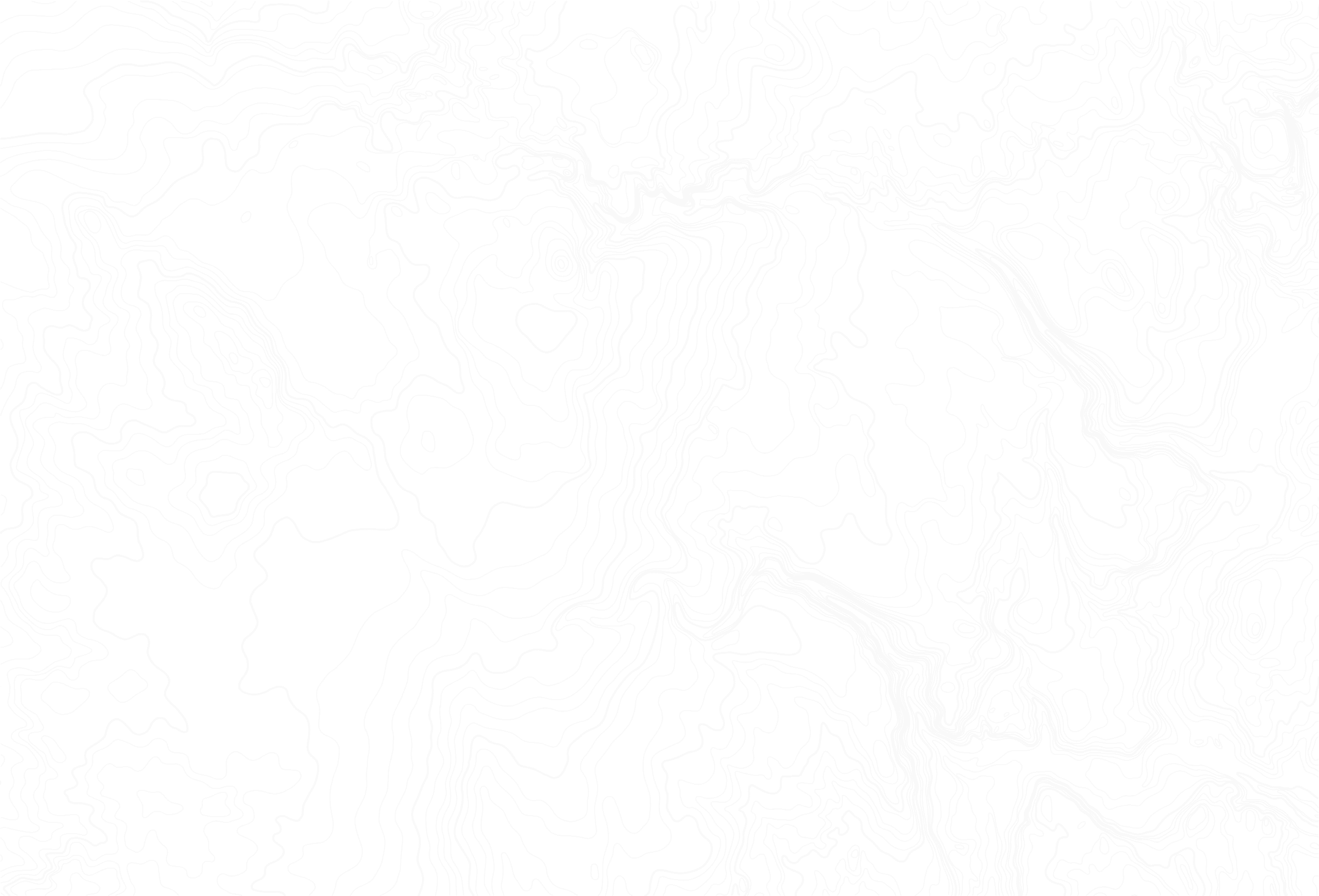

Featured
Juicy homemade jalapeno cheddar brats are perfect for grilling all summer long. They’re packed with all the right seasonings and fresh ingredients, making them extra tasty.

Featured
MeatEater and Moultrie Mobile join teams to bring hunters closer to nature.

Featured
These wild turkey skewers are tender and smothered in a homemade teriyaki glaze. Wild turkey sometimes gets a bad reputation for being a tough meat but when prepared properly using the steps in this recipe, the results are amazing.

